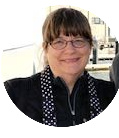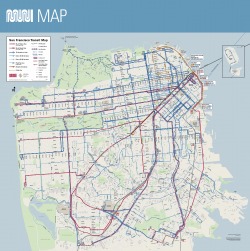- Home
- Things to Do
- Best time to visit SF
The Best Time to Visit San Francisco - 2024
Is there a best time to visit the City by the Bay? Yes!
The best time to visit San Francisco is in the fall, when the weather is warm and dry, and there are lots of fun things to do in the the city.
The summer crowds have lessened so it's easier to explore the attractions and hotel prices are not as high.
October is the best month to visit San Francisco, followed by September!
Here are my tips on the best time to visit San Francisco.
I've lived through 30 years of San Francisco weather and have experienced all the peculiarities of the San Francisco climate.
So I can tell you what San Francisco weather is really like.
Averages and statistics can tell you a lot, and I've included them below, but they don't give you the whole picture.
There are four main factors in picking the best time to visit San Francisco: weather, crowds, expense, and variety of things to do.
Jump to:
Depending on how important the various factors are for you, you'll be able to figure out the best times for you to travel to San Francisco.
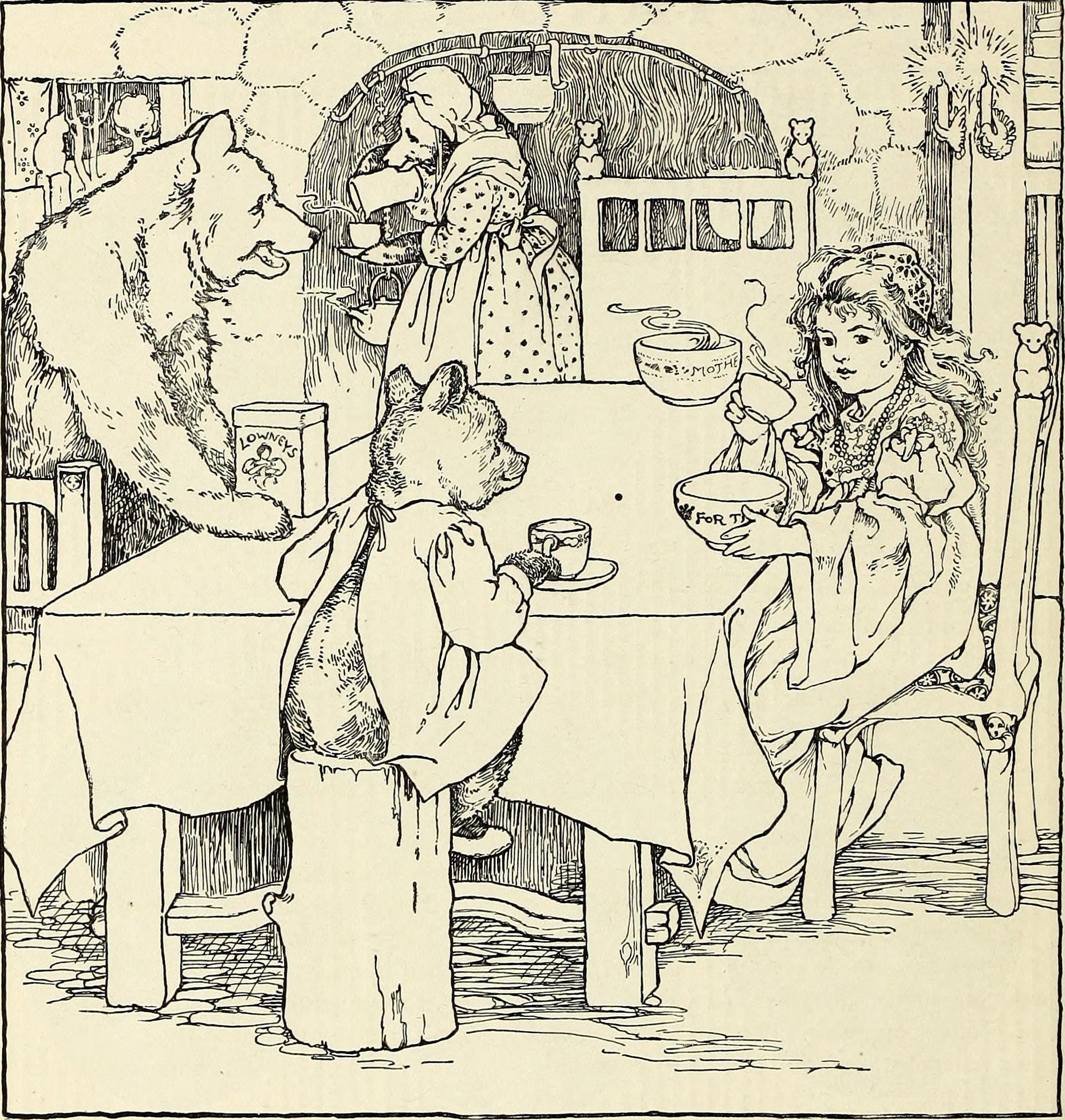 San Francisco's climate
San Francisco's climateOur mild winters and dry, pleasant summers make San Francisco one of the best places to visit at any time of the year.
Sort of a Goldilocks climate: not too hot and not too cold. Without the bears; they're up in the mountains.
Compared to many areas in the United States and around the world, San Francisco has pretty good weather most of the year, due to our mild temperatures and temperate climate.
The average monthly high temperatures are in a narrow range: 58 to 71 degrees.
So are the average monthly low temperatures: 47 to 56 degrees.
Most months in San Francisco have high temperatures in the 60's and low temperatures in the 50's.
See table and graph below.
This article contains affiliate links and I get a small commission if you book through them, at no additional cost to you. This helps me provide all the free information on the site. Thank you!
SF Bay Area Weather
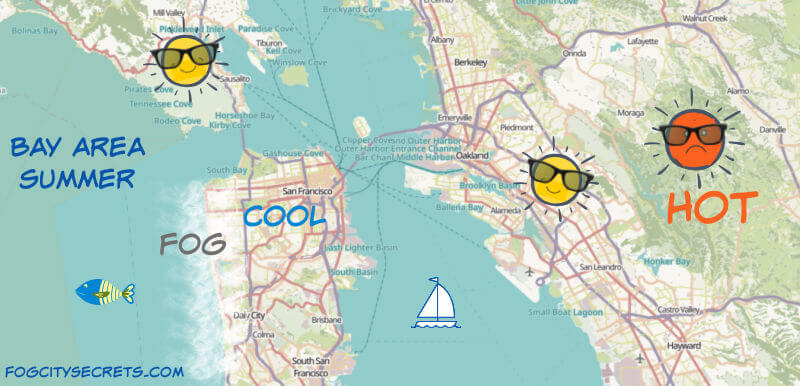 Typical summer weather in the SF Bay Area
Typical summer weather in the SF Bay AreaCalifornia overall has a Mediterranean climate: hot, dry summers and cool, rainy winters.
That said, San Francisco has a climate all it's own.
The influence of the cold waters of the Pacific Ocean just offshore keeps San Francisco both cooler in summer and a bit warmer in winter than the surrounding territory.
The fog machine. The interplay between the frigid ocean current offshore, and the hot inland air temperatures, create the famous San Francisco fog, our natural air-conditioning.
It can be boiling hot, 90's and 100's, (32C to 38C+), just beyond the hills to the east and in the Central Valley of California, while San Francisco is shivering in 58 degree fog (14C).
That's a common summer pattern for the Bay Area and beyond.
See San Francisco weather for more info.
Which months have the best weather?
The big picture: San Francisco has five months of rainy weather and seven months with little or no rain.
The rainy months: November through March.
The dry months: April through October.
The foggy months: May, June, July & August.
The sunny months: April, September, & October.
The coldest months: November through February.
The warmest months: September & October.
The hot months: there aren't any! September is the "hottest" month and the average high is 71 degrees.
The rains taper off in early April, so sometimes April showers bring May flowers, but it's not much and not that often. So April can turn into a nice month to visit once it gets started.
It seems like the rain always holds off until after Halloween on October 31, then comes in with a blast November 1 or soon after. Very considerate.
The winter rains comes in waves, as the storms move in from the Pacific Ocean, with a few days' break in between, typically.
Very different from the tropical pattern of sudden buckets of rain, then the sun breaking out again.
Average monthly highs and lows for SF
First the Fahrenheit temps...
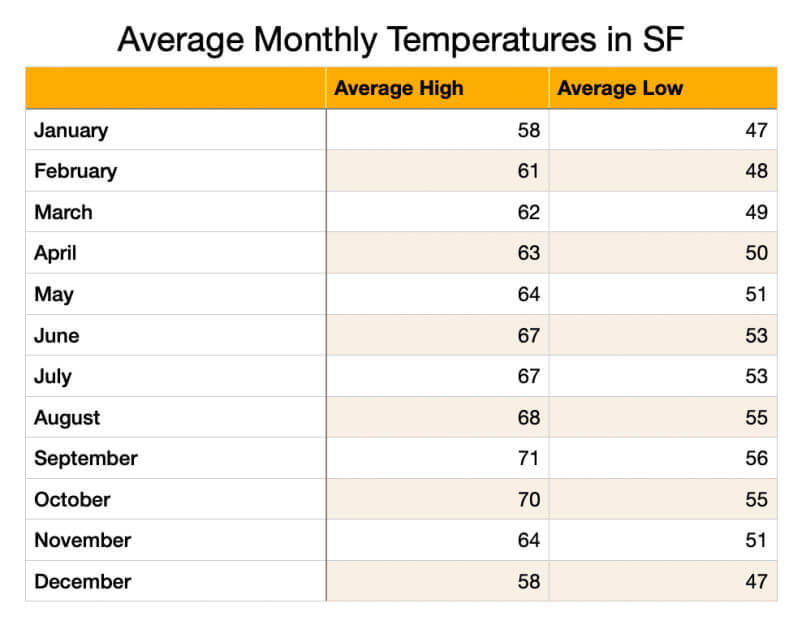
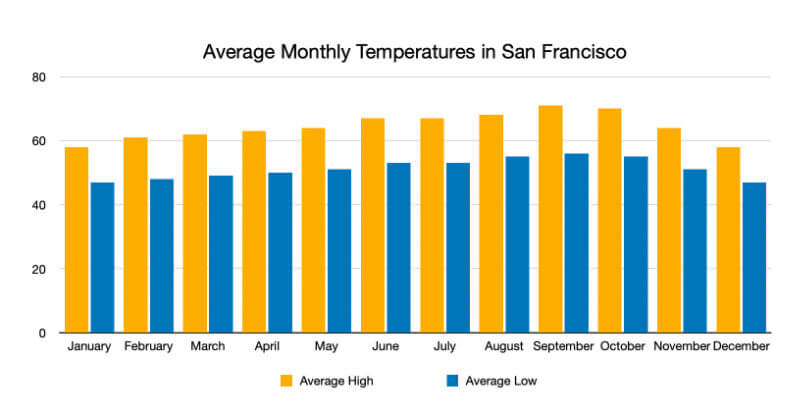
Celsius temps for SF...
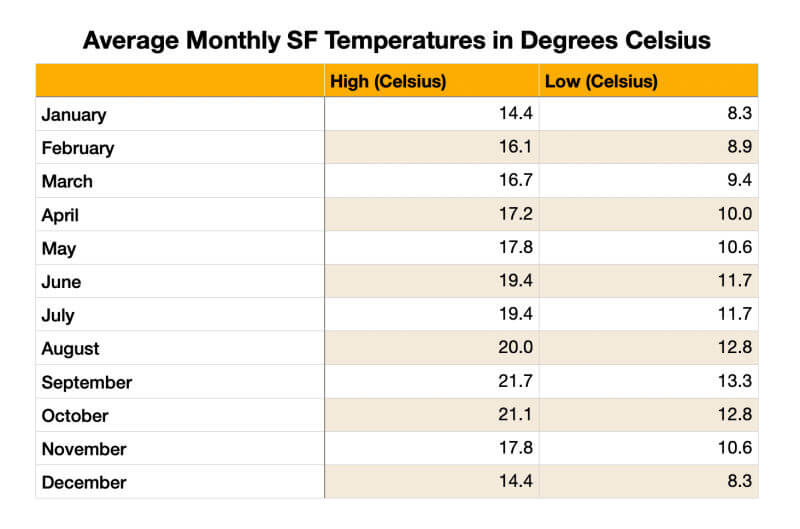
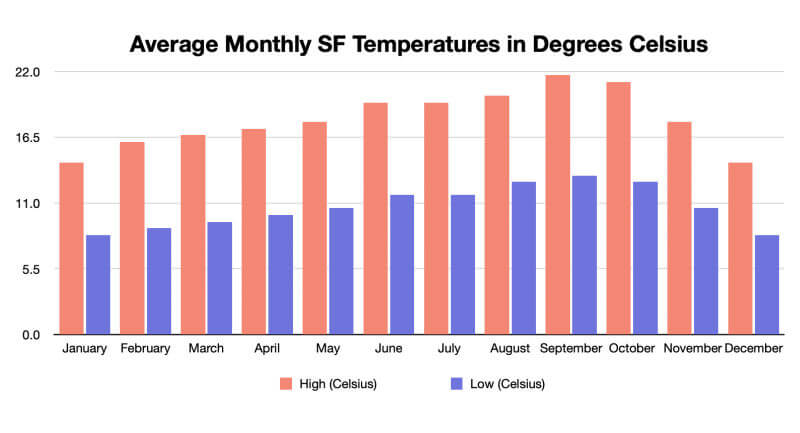
The temperatures don't vary a whole lot, as you can see.
The weather differences have more to do with whether it's rainy or foggy.
Looking for a hotel in SF? I created an article on the best areas to stay in San Francisco, with maps and hotel recommendations.
Check out descriptions and locations of the safest areas, best areas for families, best areas for traveling with or without a car, and some fun choices. Plus highly-rated hotels in each area.
The best months for weather in San Francisco
The warmest, sunniest months in San Francisco are September and October, the truly best months to visit San Francisco. High's around 71 and lows around 56. You still need a jacket in the evening.
Next best months for a visit to SF, weather-wise: April (2nd half) and May (1st half). Not as warm, but nice, mostly sunny weather in the 60's.
April and May are mostly dry, with little or no rain. At some point in May, the summer fog starts to roll in.
The cool, foggy months
The foggy months in San Francisco are May, June, July and most of August.
But the fog has a strong preference for the western half of San Francisco. So it can be fogged-in in Golden Gate Park and the zoo, while the sun is shining in the Mission District and Fisherman's Wharf.
This happens because San Francisco has microclimates.
The cool ocean air and fog often gets blocked by the row of hills in the center of San Francisco, like Twin Peaks and Mount Sutro.
The fog often gets completely stopped, but some of the cool air comes over the hills and keeps the eastern half of the city pleasantly mild: not too warm, not too cold.
Even with the fog, it's not that cold: highs in the mid to upper 60's, lows in low 50's. But it is often windy, which makes it feel colder. Again, jacket weather.
If San Francisco is fogged in, you can easily escape to Sausalito across the Bay, or just about anywhere outside of San Francisco, where the sun is shining.
Summer in the Bay Area is sunny everywhere except San Francisco (and the towns of Daly City and Pacifica, just south of the city - worse fog than SF!).
Summer months in San Francisco
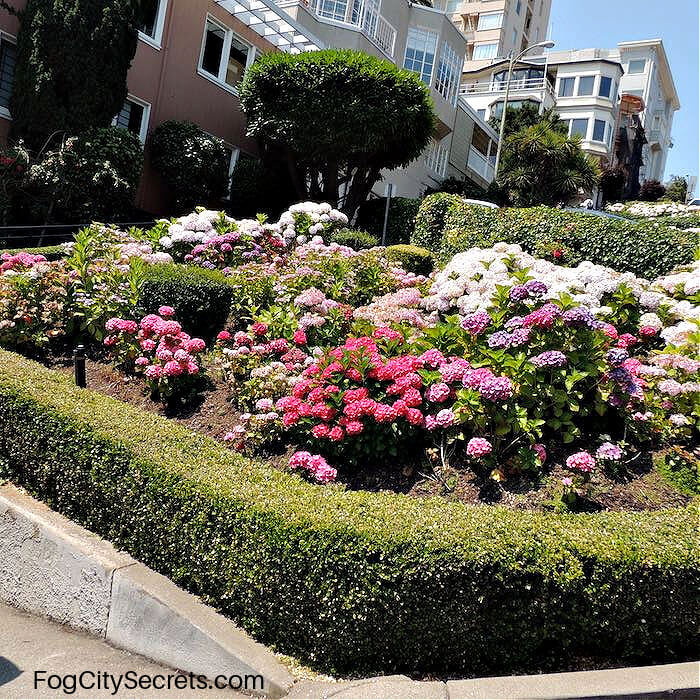 Hydrangeas blooming in July on Lombard Street
Hydrangeas blooming in July on Lombard StreetEven though the summer tends to be foggy and cool, the temperatures are still mild and there are few rainy days. Summer is the peak season for tourism in San Francisco.
By cool, I mean highs in the upper 50's to upper 60's, lows in the low to mid 50's, depending on which side of San Francisco you're on. Jacket weather.
The western edge of the city is the coolest and foggiest. Golden Gate Park, the Sunset District and the Richmond District are known for their fog.
In summer there is often a ten degree difference in temperature between the warmer Mission District and the foggy Sunset.
It can often be foggy on one side of the city and sunny on the other side.
Ocean Beach on the western edge of San Francisco has a tendency to be cold and foggy in summer. But it's warm and sunny in September and October.
I lived in the Sunset District for years and luckily I happened to love the fog and cool temperatures out there (not everyone does!).
Winter months in San Francisco - the cold weather
The coldest months in San Francisco are December, January and February, when the highs are around 58 degrees and the lows around 47 degrees.
Winter in San Francisco is cold and rainy; not Midwest or East Coast cold, but temps in the 40's and 50's. Typical pattern is a few days of rain, a break for a few days, then another set of rainy days.
The "weather" in winter comes in off the Pacific Ocean; we look west to see what's coming. There are usually a series of storms that blow in, off and on all winter. Every now and then we have a dry winter.
But almost never snow or sleet. And no hurricanes or tornadoes. Thunderstorms are rare as well.
Fall season in San Francisco - the warm weather
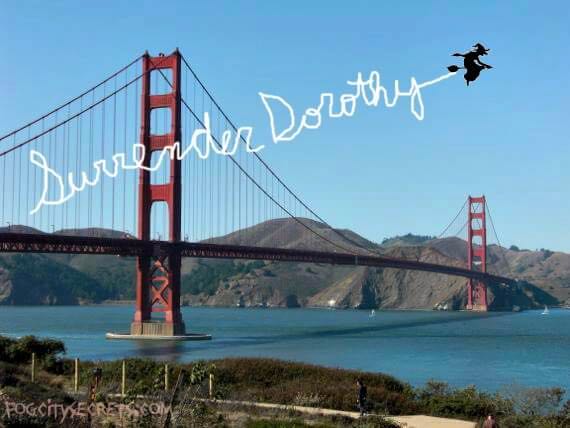 Halloween in San Francisco
Halloween in San FranciscoFall is the best time of year to visit, with warmer temperatures and the best weather.
When fall arrives, the fog has disappeared (mostly) and our Indian summer has arrived.
September and October are the months of blue skies, warmer weather, and sunny days. Average highs are 70 or 71.
Late August can be very pleasant as well, as the fog starts to ease up and the warm season gets going. It can even get hot, at least for a few days in October.
San Francisco's 'heat wave" happens about once a year: three hot days in a row over 90.
The 1989 San Francisco earthquake hit in October on a really hot day. Locals took this as confirming the existence of "earthquake weather": hot, with no wind.
San Francisco tends to be windy, so many locals get nervous when the air is very still, especially when it's hot. Science doesn't support this urban myth, but it hangs on anyway. (The Big One in 1906 also hit on an unusually hot day in April.)
The locals suffer mightily when it's hot, and complain bitterly, but the fog usually rolls back in from offshore in two or three days, and Mother Nature's air conditioning turns on again.
Some of the complaining is justified, though; most houses in San Francisco don't have air conditioning.
Spring in San Francisco is rather brief. March is cold and rainy, and May is cool and foggy, so April it is! Sunny and somewhat warm.
The flowers are blooming in April and it's the best time to see the cherry blossoms in the Japanese Tea Garden.
April is also a great time to explore the many gardens of Golden Gate Park: the Rose Garden, Fuchsia Garden, Dahlia Garden, Rhododendron Garden, and my favorite, the Shakespeare Garden, with hundreds of the plants mentioned in his poems.
Best time to visit San Francisco for fewer crowds
Most of San Francisco's visitors come in the summer months: June, July and August, when schools are out and many people take their vacations. Summer is the peak tourist season.
There are fewer crowds in the winter months, although the Christmas holidays and New Year's see an influx of merry-makers. If you want to do indoor activities, like go to shows or concerts, or visit the museums, winter can be a great time to come.
There are fewer tourists in September and October compared with the summer, and the weather is the warmest and sunniest then, so it may be the perfect time to come.
Best time to visit San Francisco for affordability
The most affordable time to visit San Francisco is in the colder months: November, January, February and March. This is considered off-season and generally has the fewest visitors to the city.
December is the exception; the holiday season is a popular time to visit San Francisco and hotel rates reflect that.
Another exception is the week around Chinese New Year in February. This is a huge celebration in San Francisco and attracts large numbers of visitors.
The most expensive time to visit San Francisco is during the peak season of summer. The summer months of June, July and August see the most visitors to San Francisco.
The shoulder seasons of April, September and October are also popular, but less busy than the summer season and less expensive.
What varies the most in terms of expense are the hotel room rates.
Restaurant prices and attraction prices don't vary that much, if at all, though you are more likely to find discounts on certain activities like tours off season.
Tickets for Alcatraz are the same year round, but prices for some of the tours combining Alcatraz with another tour can sometimes be cheaper off season. See Alcatraz combo tours to check rates.
Best times for San Francisco activities
If you have specific activities you want to enjoy, then the best time to visit San Francisco would depend on those.
Outdoor activities - when to visit SF
For outdoor activities in San Francisco, mild and sunny weather is optimal, so September, October and April would be the best bets.
If photos aren't that important (or you want some arty fog shots), then May through August are also good times to do outdoor activities in San Francisco because it's not that cold (a light jacket suffices) and it's not raining.
So April through October are the best months to visit San Francisco for outdoor activities.
San Francisco things to do outdoors
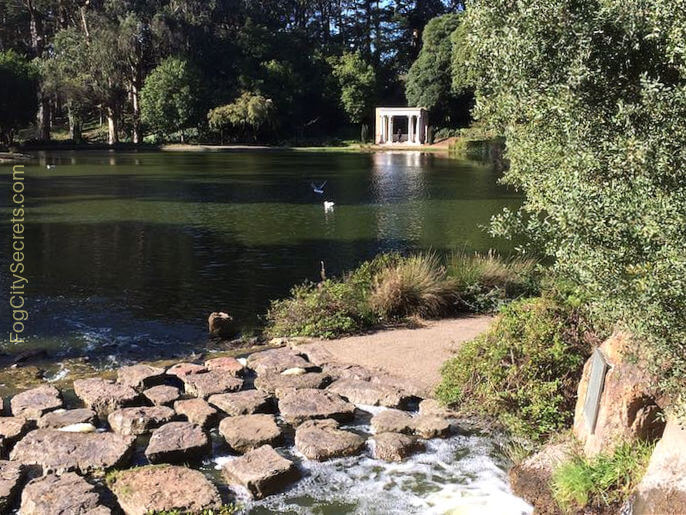 Portals of the Past in Golden Gate Park
Portals of the Past in Golden Gate ParkGolden Gate Park. This beautiful park is so full of things to explore out of doors. The Japanese Tea Garden, Stow Lake, the lush variety of gardens and the Dutch Windmills are great spots to visit. Even horseback riding in the park.
See my complete guide to all the things to do in Golden Gate Park.
Bay Cruises. Taking a boat tour out under the Golden Gate Bridge, around Alcatraz Island, and past the city skyline, is something not to be missed! This is one of my favorite things to do in San Francisco. Best if the weather is mild and sunny, but still fun on foggy days (most of the boats have inside areas if you get cold).
See my recommendations for the best bay cruises in San Francisco.
Golden Gate Bridge. Another must see for San Francisco. See it up close and admire the spectacular views of the bay and city from the bridge.
You can walk across the bridge all year long for free, or rent a bike and ride across the bridge, all the way to Sausalito. Or take a bay cruise and sail under the bridge.
Check out my guide to the Golden Gate Bridge.
Botanical Gardens. Acres of native plants of the Americas in a pretty setting in Golden Gate Park, including a redwood grove, fragrance garden, and a moon-viewing garden.
See the San Francisco Botanical Gardens for more info.
San Francisco Beaches. Beaches in San Francisco have some gorgeous views of the Golden Gate Bridge and the Marin Headlands.
They're great places to walk, picnic or just hang out. Not safe for swimming, so you don't need to wait for a hot day for a beach outing (good, since there aren't any!).
Visit some great view beaches like Baker Beach or Marshall's Beach, or check out all of San Francisco's beaches.
Hikes and walks in the city. San Francisco is a great city for walking. The mild climate and amazing views make it one of the more popular things to do in the city.
Walk the coastal trail at Lands End with its stunning views of the bridge and channel into the bay, or head up to the hills of Twin Peaks for a 360 degree view of the whole city and Bay Area.
Indoor San Francisco activities
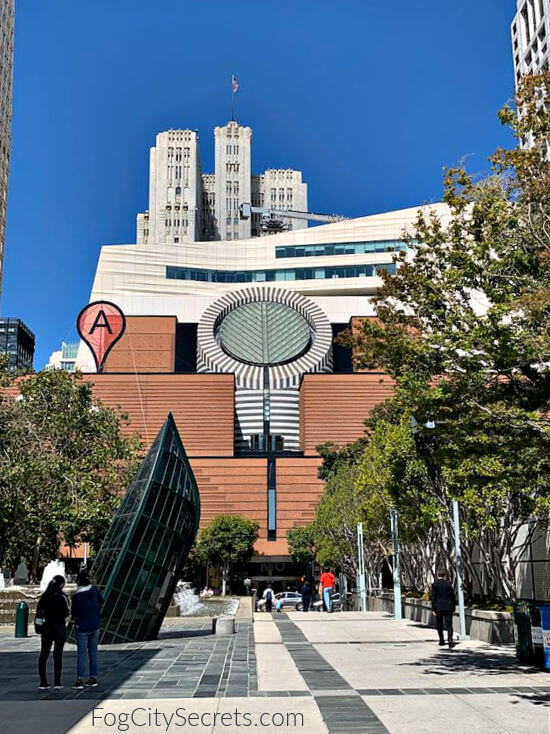 SF Museum of Modern Art
SF Museum of Modern ArtIndoor activities are great year-round, but there's plenty to do in San Francisco even when it's cold and rainy.
The Museums. San Francisco is blessed with a number of world-class art and science museums:
- The de Young Museum. Wide variety of art from all over the world.
- The Legion of Honor Museum. Great works of European & Ancient art.
- The San Francisco Museum of Modern Art. Huge collection in a beautifully redone building.
- The Asian Art Museum. Beautiful collection of art from all over Asia.
- The California Academy of Sciences. Fascinating science museum with a planetarium, aquarium and natural history museum, plus a cool rainforest dome and living roof.
- The Exploratorium. Fun, hands-on science museum where you can interact with the exhibits.
- The Conservatory of Flowers. Fun collection of plants from different tropical regions in a Victorian-style, glass building.
- Walt Disney Family Museum. The story of Walt Disney's life and the development of Disney's artistic creations.
Concerts & Shows. Loads of entertainment of all kinds is available in San Francisco.
Enjoy performances by the San Francisco Symphony, the SF Opera, or SF Ballet or take in a play at the American Conservatory Theater.
Here's a list of a variety of shows and concerts coming to San Francisco.
Japantown. Explore San Francisco's Japantown and its Japanese ambiance. It's fun to browse the authentic Japanese shops and try some great Japanese cuisine.
Most of the Japantown shops and restaurants are inside two large malls, so it's a great way to spend a rainy day.
See my guide to Japantown.
Spring activities in San Francisco
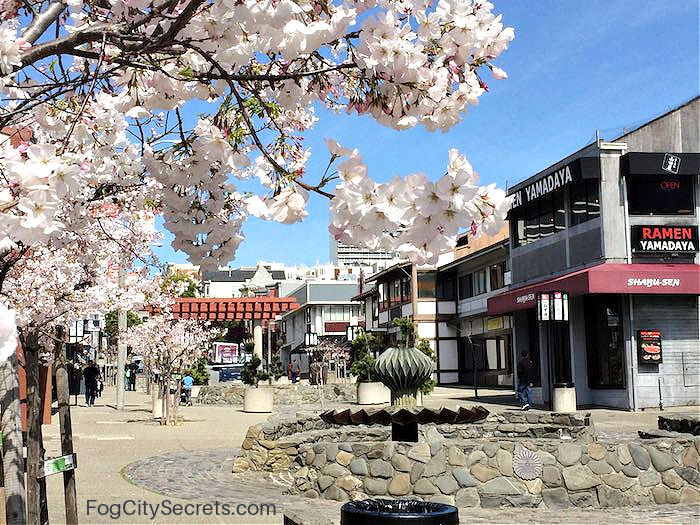 Cherry Blossom Festival in Japantown
Cherry Blossom Festival in Japantown- Cherry blossoms at the Japanese Tea Garden.
- Cherry Blossom Festival in Japantown. Japanese music, cosplay, anime films, martial arts, origami and dance, and lots of great food and crafts on display.
- Lots in bloom at the Conservatory of Flowers and the Botanical Gardens.
- The San Francisco Giants. Spring is opening season for the Giants. Watch the home games at Oracle Park.
Summer season activities in SF
- Stern Gove free concerts. All summer, free concerts in a wide variety of styles, every Sunday in a pretty, stone amphitheater in a park.
- Outside Lands Music Festival. Great bands and food, in Golden Gate Park.
- San Francisco Jazz Festival. 42 jazz concerts over three venues in June.
- San Francisco Marathon. Run the 29 miles across the Golden Gate Bridge, along the waterfront, through Golden Gate Park to Ocean Beach. Or just watch.
- San Francisco street fairs. Lots of great street fairs and festivals all summer. Fun shopping, music and food.
- Fireworks for the Fourth of July at the waterfront. Fingers crossed it won't be foggy like the last time we went!
Fall season San Francisco activities
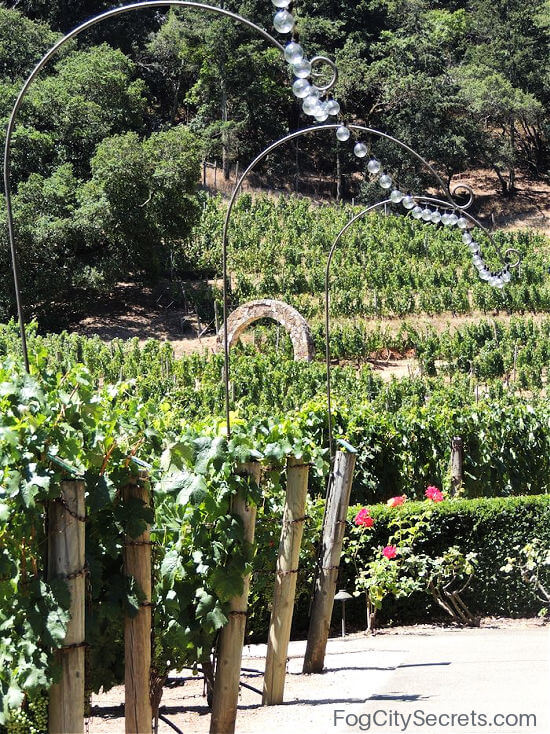 Napa Valley Vineyard
Napa Valley Vineyard- Napa Valley winery tours. They run year-round but the wine country is especially beautiful in the fall with the changing leaf colors and the golden light on the hillsides. Check out a highly-rated wine-tasting tour.
- Fleet Week. The first week of October, the Blue Angels are in town and do an amazing air show over the Bay. See Fleet Week for my tips on going and best places to watch the show.
- Halloween. San Francisco really does Halloween! Street parties and haunted houses, and trick-or-treating on decorated blocks.
- Hardly Strictly Bluegrass Festival. Very popular and free music festival in Golden Gate Park.
- The Painted Ladies. The pretty row of Victorian houses on Alamo Square is available to see all year round, but many visitors want to get that great photo of the ladies with the city skyline in the background. It definitely makes for a better picture when it's sunny, so September and October are your best bets to get a clear shot of the houses with blue skies behind them.
Winter season activities in SF
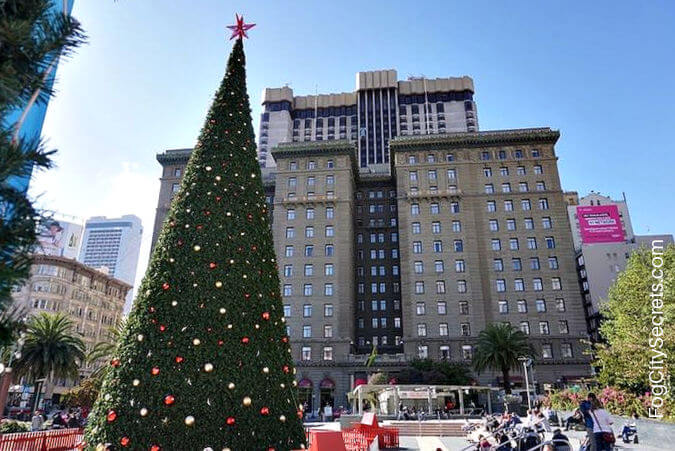 Christmas tree and ice skating at Union Square
Christmas tree and ice skating at Union SquareChristmas in San Francisco. This is a really fun and festive time to be in San Francisco. The city is lit up, and there are traditional Christmas performances to enjoy, like the Nutcracker, Handel's Messiah, and Dickens' Christmas Carol. Also ice skating at Union Square and a big Dickens Christmas Fair to get in the spirit.
See my page on Christmas in San Francisco for things to do.
New Year's Eve is a big party in San Francisco. Lots of special events.
Chinese New Year. The hugely popular Chinese New Year Parade is held in February, and there's also a Chinese New Year Street Fair to enjoy.
See my tips on celebrating Chinese New Year in San Francisco.
Year-round San Francisco activities
There are plenty of activities that are fun to do any time of year.
- Lombard Street. Walk or drive down the famous crooked street. The hydrangeas have a long blooming season but are probably at their best mid-summer (but it depends on the weather). More on Lombard Street.
- Chinatown. Chinatown is open all year round and it's fun to browse the shops, explore the interesting alleys, and eat Chinese food, especially the dim sum. See my article on Chinatown.
- Fisherman's Wharf & Pier 39. Fresh seafood and the sea lions, plus lots of shops and activities at the wharf. Boat cruises, the Bay Aquarium, amusement rides, and more. See my tips on visiting Fisherman's Wharf and Pier 39.
- Alcatraz. Alcatraz is open all year round, and lots of the tour is inside the prison, so weather isn't crucial. Tickets are a lot easier to get in winter, but the city views are prettiest in the fall. See my recommendations on taking Alcatraz tours and how to get the tickets.
- Cable Cars. Riding the cable cars is one of the best San Francisco experiences, unique to the city. You can ride them all year round. See my tips on how to ride the cable cars and which routes are best.
- Coit Tower. Great views of downtown San Francisco and cool city murals from the 1930's. And the wild parrots on the hill, San Francisco's official animal.
When to visit San Francisco - FAQ
When is the best month to visit San Francisco?
When is the best month to visit San Francisco?
October is the best month to visit San Francisco. Warm and sunny weather and lots of fun activities, plus fewer tourists than in summer. Second best month is September, for the same reasons.
October is one of the two warmest months in San Francisco. Highs are in the 70's and sometimes 80's, and once in awhile it hits the 90's, but that's rare.
San Francisco heat waves usually hit in October. But they only last a few days.
What is the cheapest month to visit San Francisco?
What is the cheapest month to visit San Francisco?
January and February are the cheapest months to visit San Francisco. The weather is least pleasant in winter, but the crowds are the smallest, and hotel room prices lower.
But avoid New Year's Eve and the days around Chinese New Year parade in February to save money.
What is the rainy season in San Francisco?
What is the rainy season in San Francisco?
The rainy season in San Francisco starts in early November and runs through March, and sometimes into early April.
What is the off season in San Francisco?
What is the off season in San Francisco?
The winter months of November, January and February are the off season in San Francisco, followed by March and April. The kids are in school and the weather is iffy.
November, January and February tend to be cold and rainy, and March is a bit warmer, but still rainy.
April is a good, off-season visit choice: the latter half of April usually has nice weather, highs in the 60's, and it's sunny.
But the week of Chinese New Year in February is crowded and busy in San Francisco, and hotel rooms would be scarcer and more expensive. December is high season; lots of people visit then. The week around Easter in April is also busy.
Is March a good month to visit San Francisco?
Is March a good month to visit San Francisco?
March is a fairly good time to visit San Francisco. Hotel prices may be lower because it is off season and it tends to be cool and rainy. But March still has mild weather and most outdoor activities are available, though you might need to carry an umbrella.
There will be a mixture of sunny and rainy days, with an average high of 62 and low of 49. Only 8 days of rain in March is the average, so it's still quite pleasant. Of course the weather varies from year to year, and the shoulder seasons are the most variable.
Is April a good time to visit San Francisco?
Is April a good time to visit San Francisco?
April is a great time to visit San Francisco. The rainy season is ending and the weather is warming up. The average high temperature in April is 63, with a low of 50, so you will still need a jacket in the evening (and carry it with you during the day). But most days will be clear and sunny.
On average, April has 4 rainy days, and those are more likely in early April. An added bonus to April is the flowers are blooming and it's a very pretty time to be in San Francisco. The Cherry Blossom Festival in Japantown is in April as well.
Is San Francisco warm in May?
Is San Francisco warm in May?
Not really. May is generally a dry month in San Francisco but the fog starts rolling in in May. May is cool and foggy, but still mild, with an average high of 64 and low of 51.
With the fog comes the wind, so it's definitely jacket weather. But you can probably ditch the umbrella.
SF Travel Tips
Getting around SF. San Francisco has lots of options for getting around without a car.
Check out my compete guide to San Francisco transportation: how to ride the buses, BART, trolleys, cable cars, & ferries, and types of passes available to make it easier and save money.
Is is safe to visit San Francisco? Our city has been in the news lately, but how dangerous is it really? Read my comprehensive article on crime in San Francisco and how to avoid problems. It's not as bad as they say, given some precautions.
Deciding what to see in SF. Need some ideas on what to do and see in San Francisco? I made a list of the best things to do in San Francisco.
Where to stay in San Francisco. Check out my guide to the best areas to stay in SF, with hotel recommendations for each area.
Safest areas, best areas for first-timers, families with kids, traveling with a car, or not. Plus fun areas to stay.
Checking the weather forecast for San Francisco. There are a number of apps that give you current weather information. Keep in mind that the temperature given for San Francisco is usually the one taken in downtown San Francisco.
To figure out the temperature near the ocean in summer, figure it's about ten degrees cooler. Winter temperatures don't vary much for different areas of the city.
Air quality in San Francisco. San Francisco usually has excellent air quality, since we get our air right off thousands of miles of open ocean. But sometimes, especially in late summer, our air can be pretty bad from forest fires burning north of here. You can check air quality with AirNow.gov.
What to wear in San Francisco. The answer is simple, and the same for summer and winter: dress in layers. Since San Francisco is generally cool and windy, always bring a jacket, even in the warmer months.
What starts out as a warm day can quickly turn cool, even kind of cold, if the fog decides to make an appearance. Umbrellas: November through April, otherwise you can leave them at home.
If you want to blend in and go incognito, and avoid being seen as a tourist, wear black (and no shorts).
Share this page:
